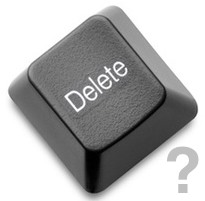

Mac delete key in windows code#
Generally, users on IU central systems prefer Backspace (or delete) to perform a destructive backspace (ASCII code 127).įor example, in PuTTY, right-click the top border of an open terminal window and then select Change Settings. Depending on your client, look for a "Profile Settings", "Window Settings", or "Keyboard" option in the preferences or configuration panel. Many SSH clients let you modify the setting that controls how the Backspace (or delete) key functions.

Pressing the Delete key performs a delete (sometimes called a forward delete), which deletes the character beneath the cursor and moves all following characters back one space.Pressing the left arrow key performs a non-destructive backspace, which moves the cursor one space to the left, but does not delete the previous character.These, in turn, may correspond to three different keys, depending on your keyboard.įor example, on a Windows-compatible keyboard: In computing, a delete, a destructive backspace, and a non-destructive backspace are all different functions, which normally correspond to three different key codes.

When you're logged into a UITS shared central system at Indiana University, if pressing your keyboard's Backspace (or delete) key does not perform a destructive backspace (it doesn't delete the character to the left of the cursor while moving the cursor to the left), the SSH client you're using (for example, PuTTY or macOS Terminal) is probably sending the wrong definition of the Backspace (or delete) key to the shared system to which you are connected. Your Windows keyboard may also have a Delete key, but it doesn't perform the same function as the Mac's delete (or Windows Backspace) key. This information refers to the key labeled Backspace on Windows-compatible keyboards and delete on Macintosh keyboards.


 0 kommentar(er)
0 kommentar(er)
